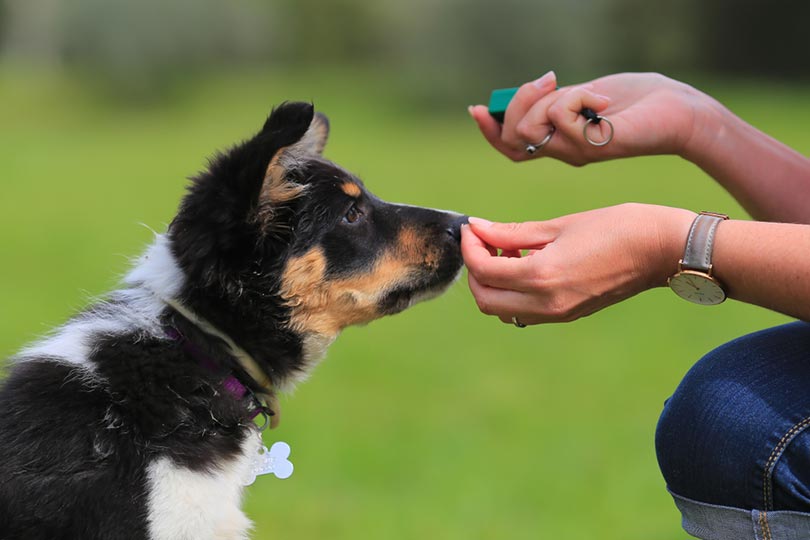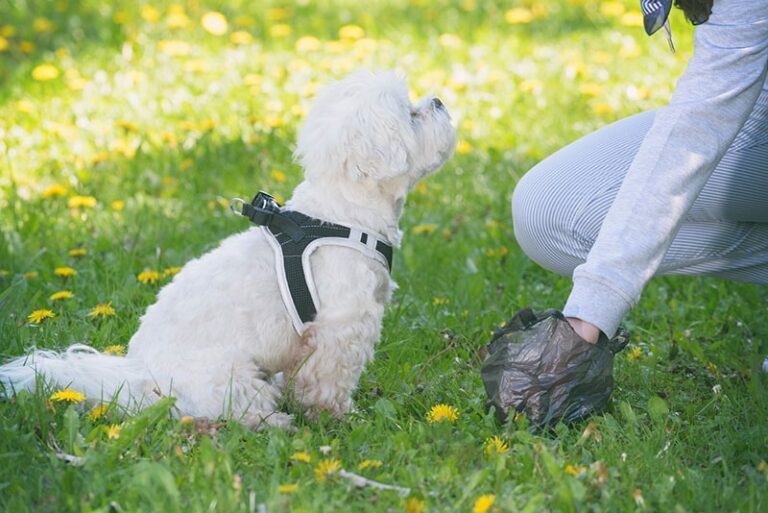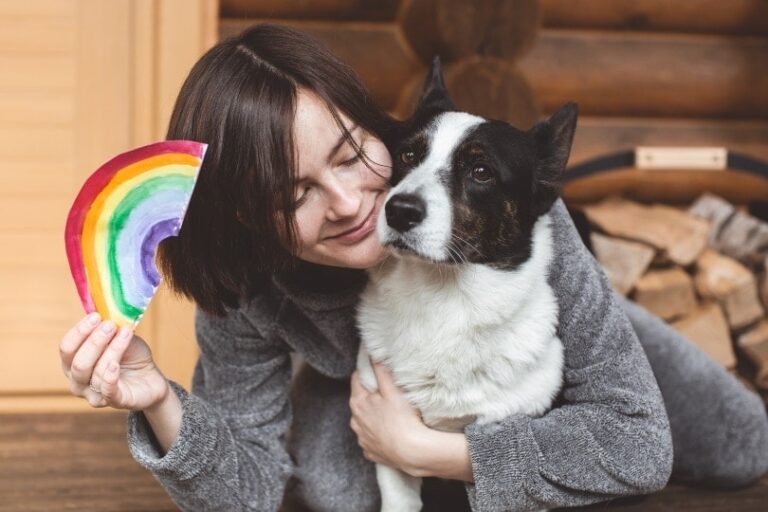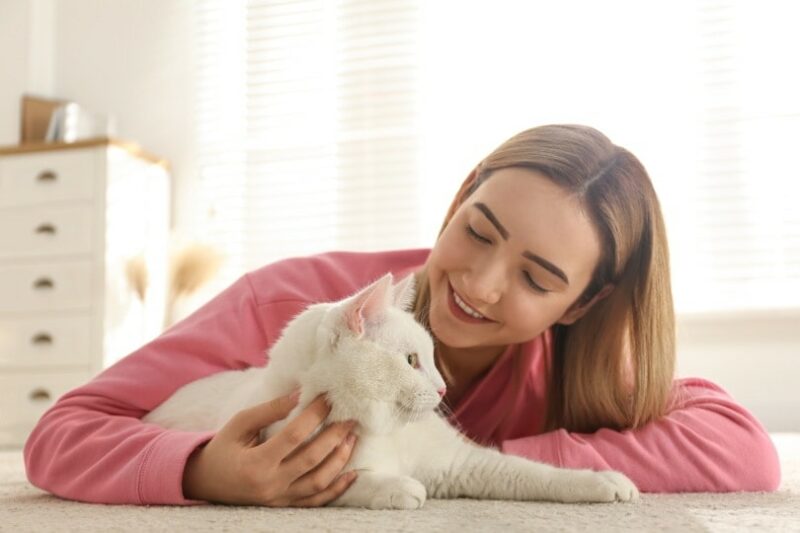VET APPROVED

The information is current and up-to-date in accordance with the latest veterinarian research.
Learn more »Housebreaking a puppy isn’t usually too challenging, however, it is time-consuming and requires patience. The key to housetraining your puppy successfully is repetition and reward. If you take small steps consistently, your puppy should be housetrained relatively quickly.
Some puppies take longer than others to get the hang of it. In particular smaller puppies have tiny digestive systems that can’t hold on for very long so they may take longer to potty train. If you’re at work for long periods of the day, housetraining is also much more difficult.
Let’s take a look at the steps required to housebreak a puppy.
The 5 Steps on How to Housebreak a Puppy
1. Prepare the Environment
You want to set your puppy up for success, and that means setting up an environment that makes it easier for them to potty in the proper area.
Start by setting up a designated potty area. While “outside” might work for a housetrained dog, puppies need something a bit more specific. Choose a part of your yard that you can take your dog to every time. Preferably, it should also be away from distractions.
If you don’t have regular enough access to an outdoor area, then you can train your puppy to use a puppy pad or other indoor toileting area. It can take a bit longer though when you then want them to adapt to going outdoors only.
Crate training can also help with toilet training as dogs naturally avoid making a mess in their ‘den’ where they sleep. Crates are also very useful as a safe place where your puppy is happy to be confined when they are not supervised.

2. Establish a Routine
Next, you want to establish a routine as soon as your puppy comes home. Take your puppy to the designated potty area at least every hour or two. Always choose more often, when possible, though.
You should try and take your dog potty after waking up, eating, and drinking. Often, these activities signal your dog to use the potty, so it’s important to take advantage of these times. Always supervise your dog closely when indoors. Watch for signs that your dog needs to go to the bathroom, like sniffing and circling.
3. Use Cue Words and Treats
When your dog uses the bathroom outside, use a specific word or phrase like “go potty.” You want them to associate this word with using the bathroom, even if they don’t particularly use the bathroom on cue.
Once your puppy uses the bathroom properly, lavish them with praise and petting. Treats are encouraged, though use small ones since your dog will be using the bathroom a lot. This positive reinforcement helps your dog understand that you want them to go outside.

4. Clean Accidents Thoroughly
Even if you do everything perfectly, your dog will have some accidents. It’s important to clean these thoroughly with an enzymatic cleaner. Otherwise, your puppy may be attracted back to the spot even if you don’t smell anything.
Punishment is ineffective, and it may damage your dog’s budding confidence and their bond with you. When punished, your puppy only learns not to use the bathroom in that spot. Unless you want your dog to use the bathroom on every square inch of your house, it’s better to focus on rewarding them when they use the correct spot.
If you're trying to find an enzyme cleaner that does it all, we highly recommend our favorite cleaner, the Hepper Advanced Bio-Enzyme Pet Stain & Odor Eliminator Spray.
- ADVANCED ENZYMATIC CLEANER - Penetrates the most stubborn smells and stains at the deepest molecular...
- FOR ANY MESS, ON ANY SURFACE - This pet odor eliminator cleans your carpets, floors, furniture,...
- FRESH, NATURAL ODOR - Our unique formulation doesn't rely on dangerous or unpleasant chemical...
It permanently removes the very worst stains and smells you can imagine and makes clean up a breeze. There's even a 100% satisfaction guarantee! Click here to order a bottle today.
At PangoVet, we’ve admired Hepper for many years, and decided to take a controlling ownership interest so that we could benefit from the outstanding products of this cool cat company!
5. Seek Professional Help
It’s important to be patient with your puppy. Setbacks are very normal, especially right after a change in routine. It’s important to be as consistent as possible and not let your routine slide. You may find that housetraining your dog is more about your discipline than your puppy’s.
However, if you are being consistent and your puppy hasn’t shown any signs of improving, it’s time to seek professional help. Sometimes, small bumps in your routine or training method may be hard for certain dogs to overcome. Plus, some dogs are also harder to train than others.
If your dog was previously housetrained and starts having accidents again, make a vet appointment. Improper urination can be a sign of health issues, ranging from urinary tract infections to anxiety. We highly recommend getting your dog seen by a vet before assuming they’ve just forgotten everything they’ve learned.
Wrapping Up
Housetraining a puppy is mostly about time and consistency. If you consistently take your dog outside at regular intervals and reward them, they should make steady progress toward housetraining.
Of course, accidents will happen. When they do, consider what went wrong. Were you not supervising properly? Or have you not taken your dog out often enough?
Don’t use punishment, as this only teaches your dog what not to do.
Featured Image By: Jaclyn Vernace, Shutterstock















